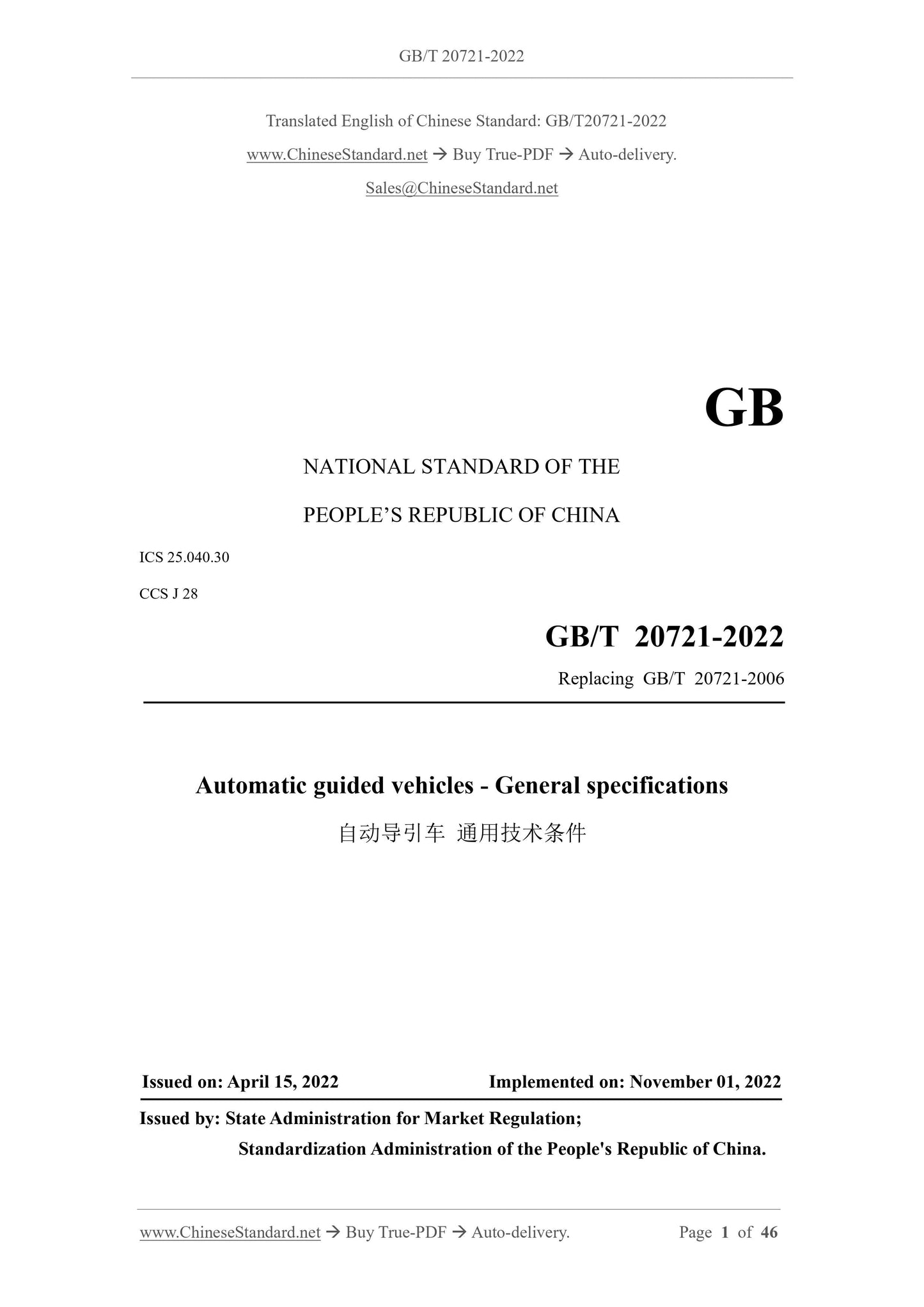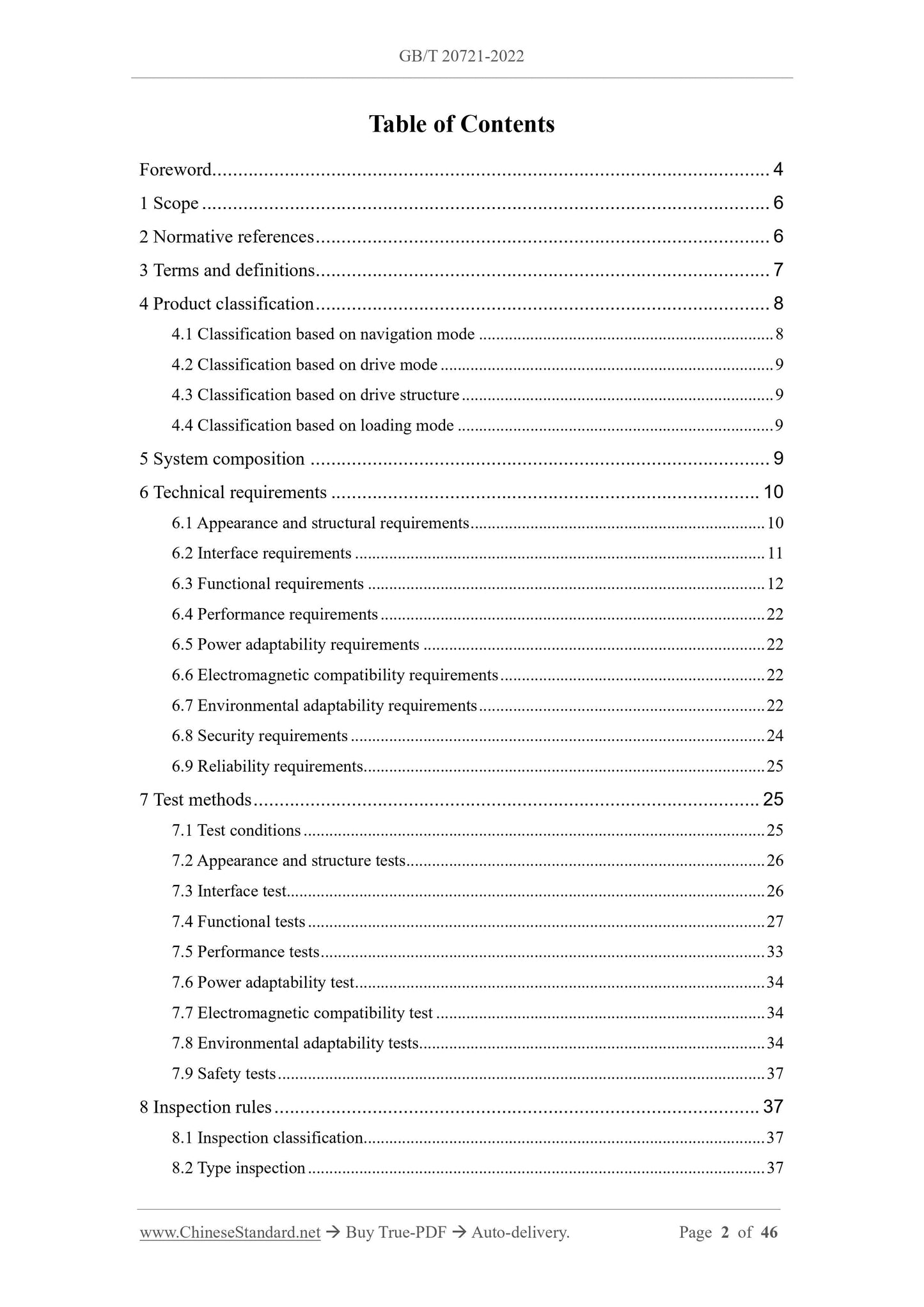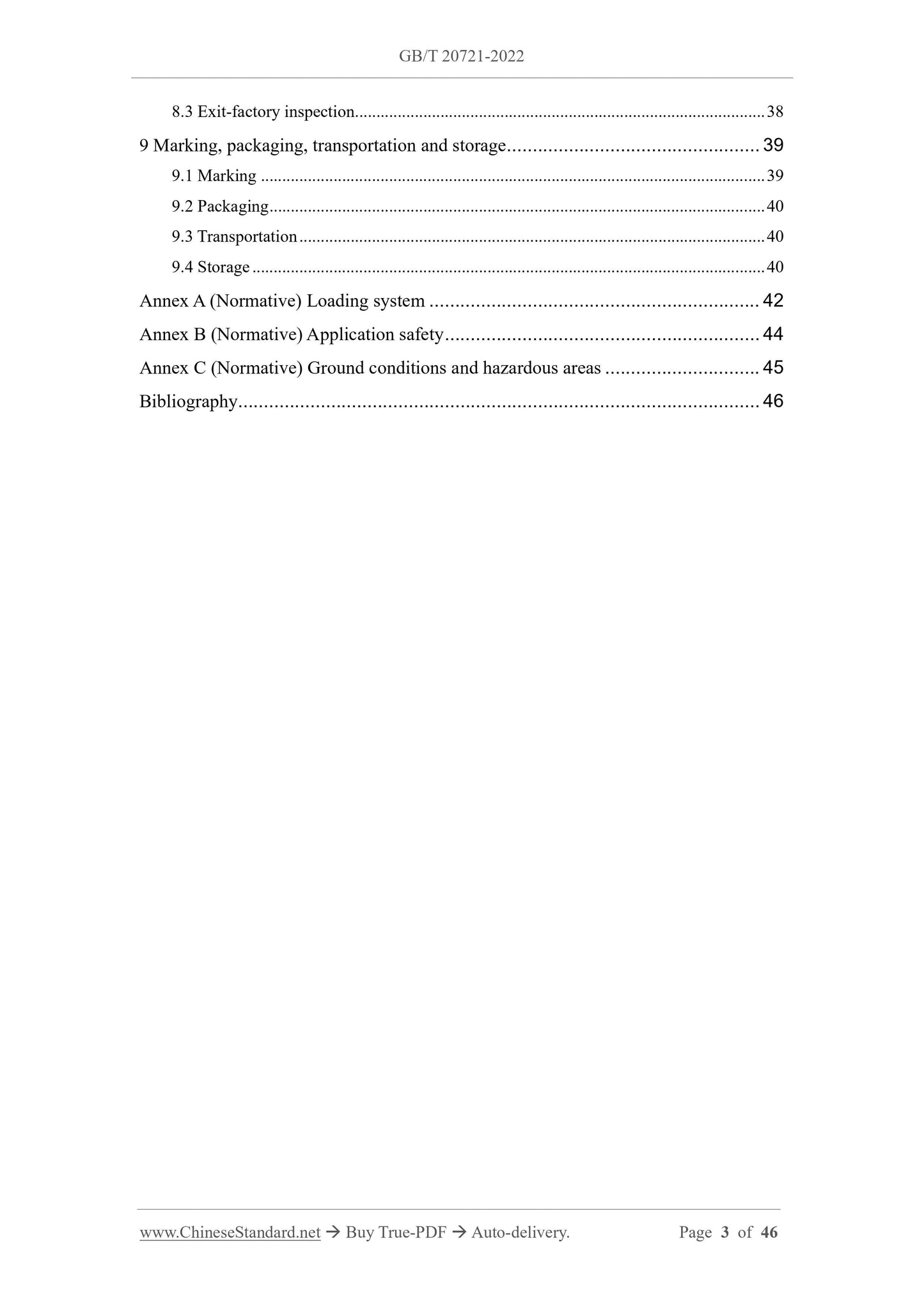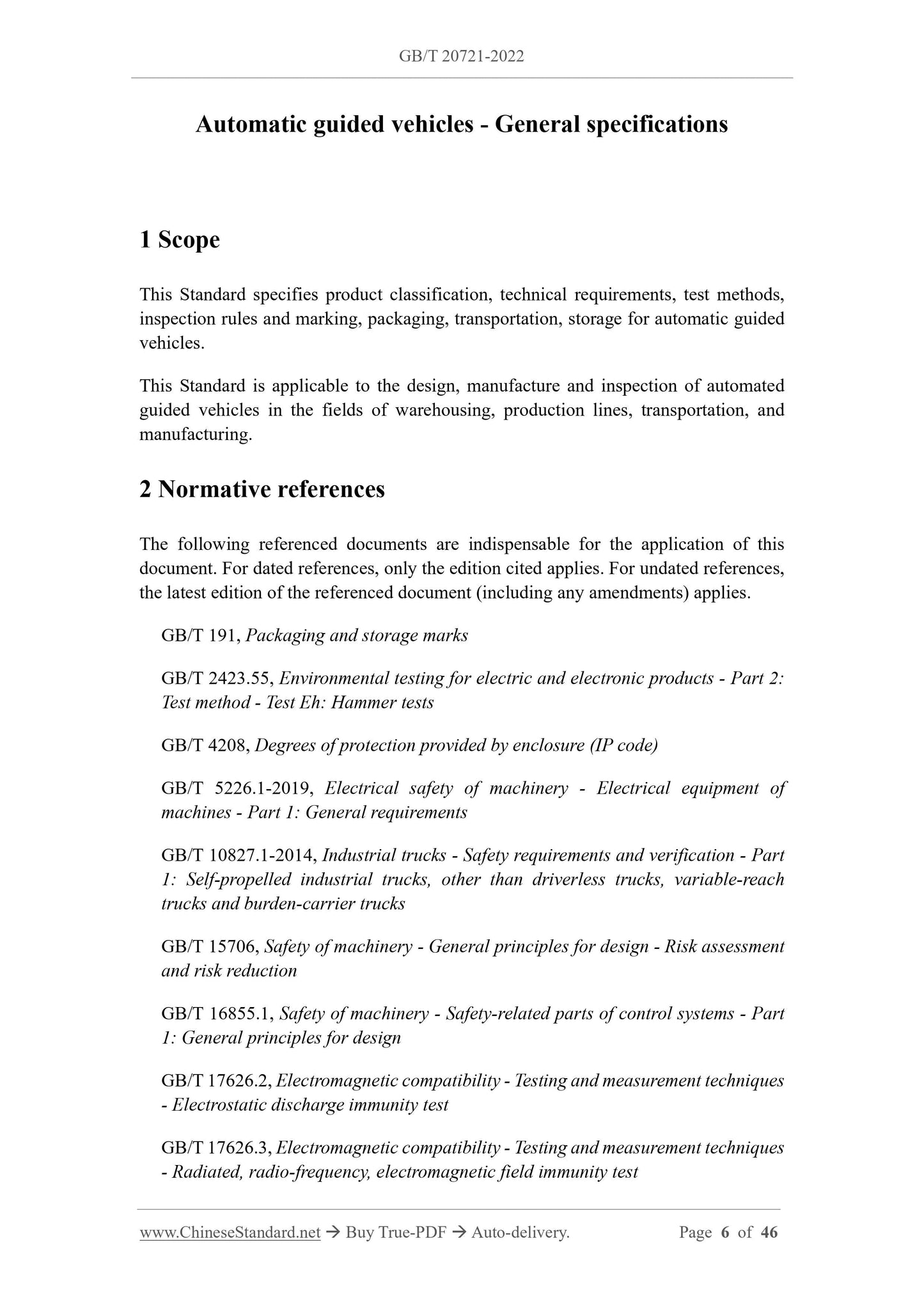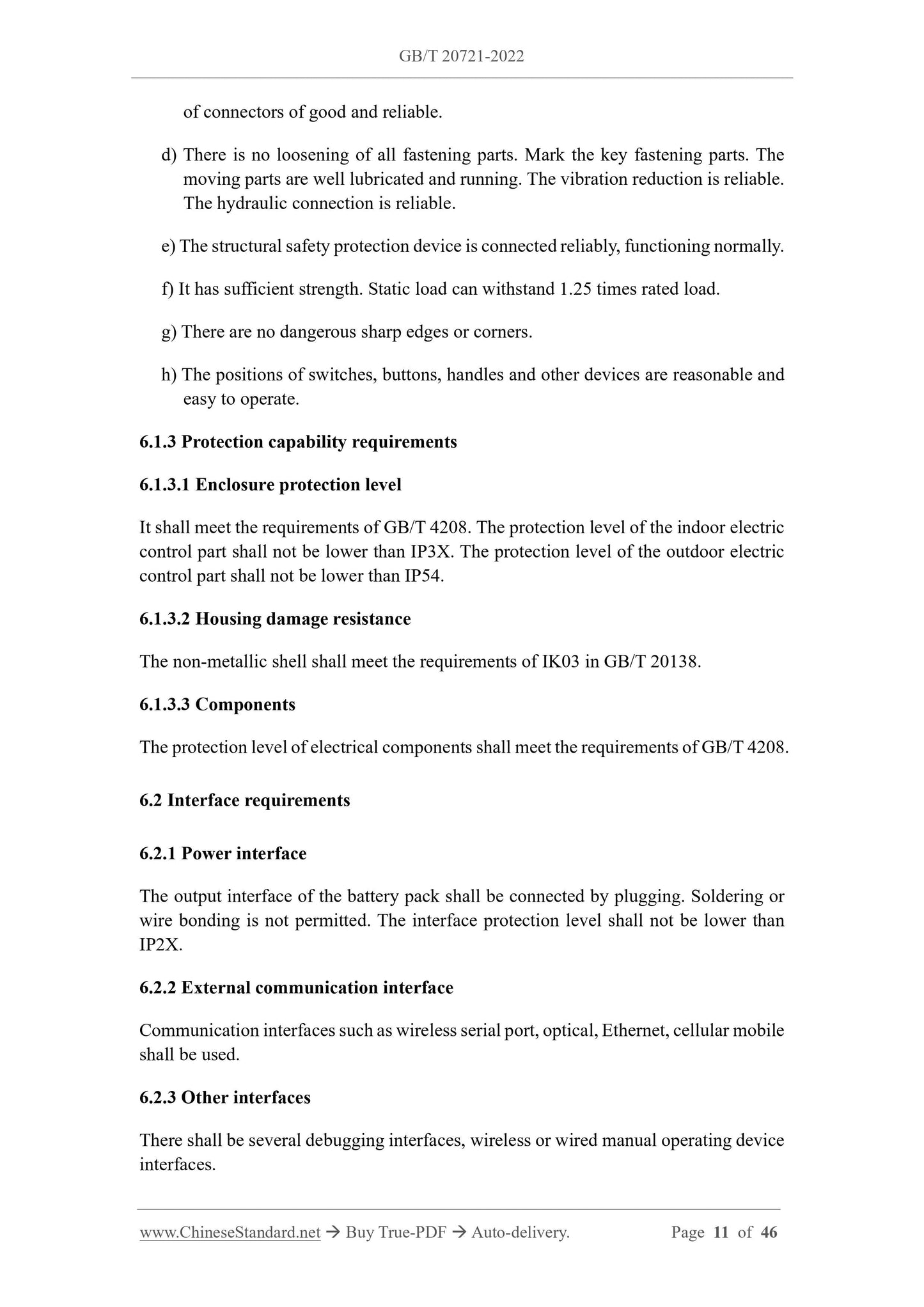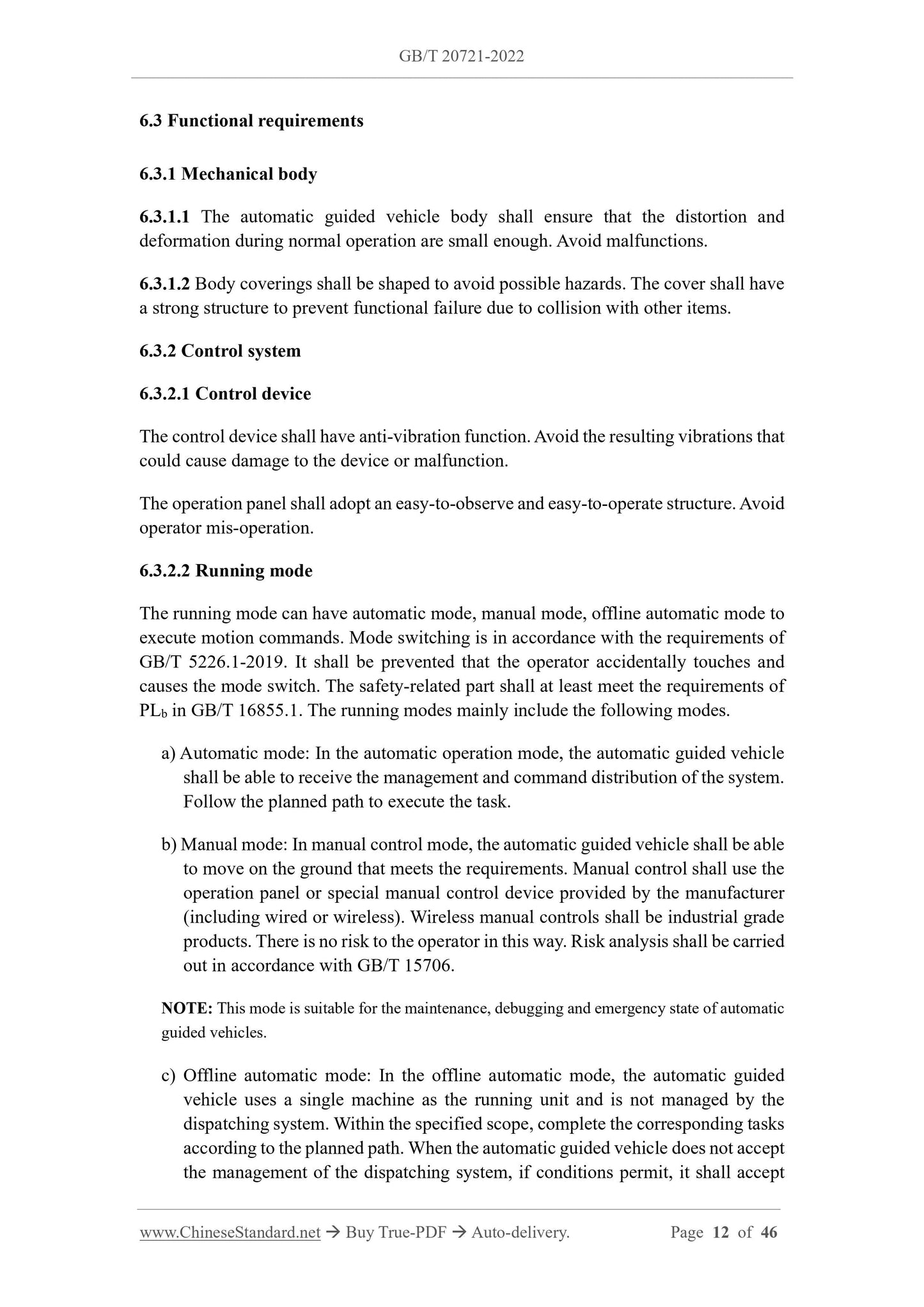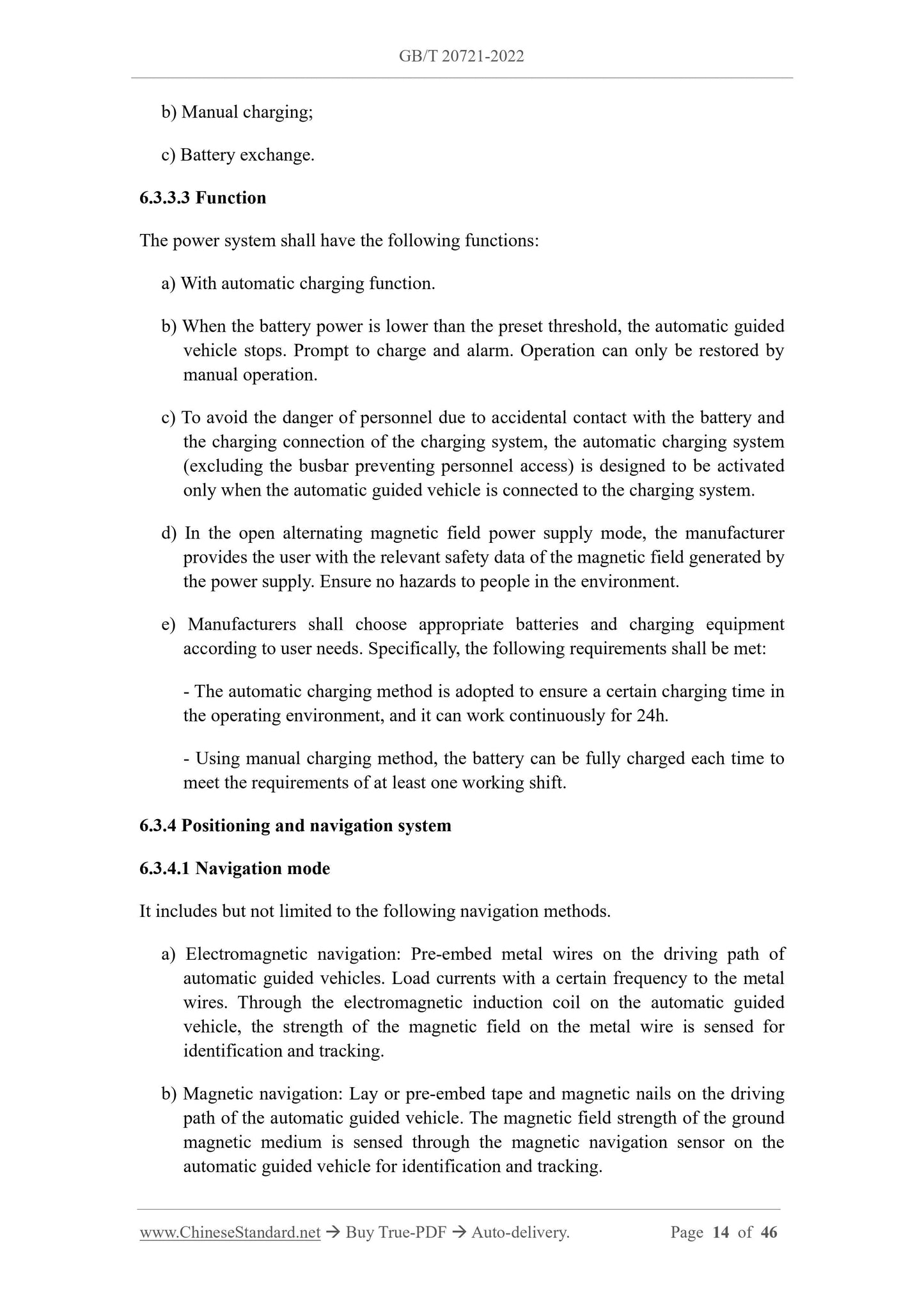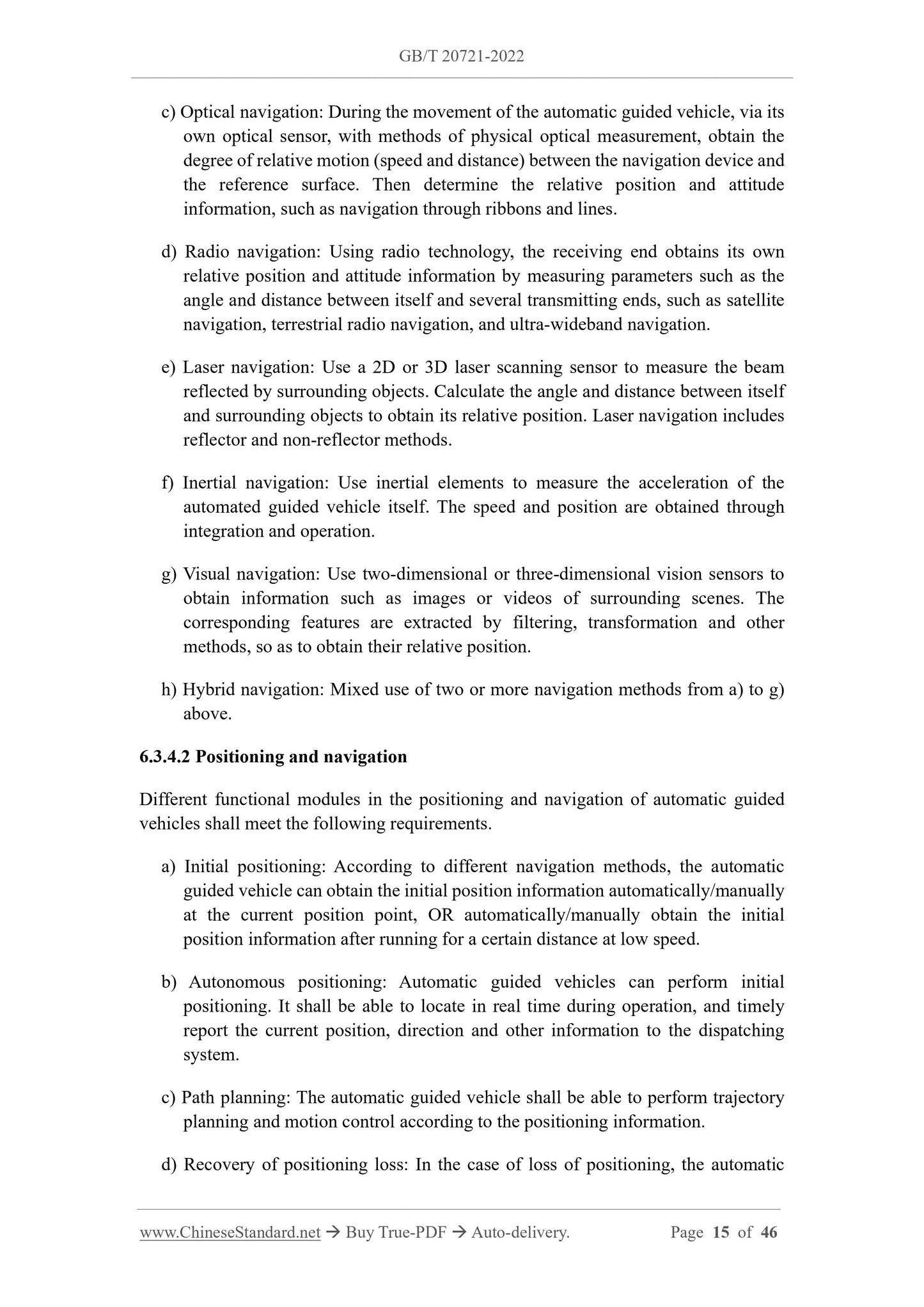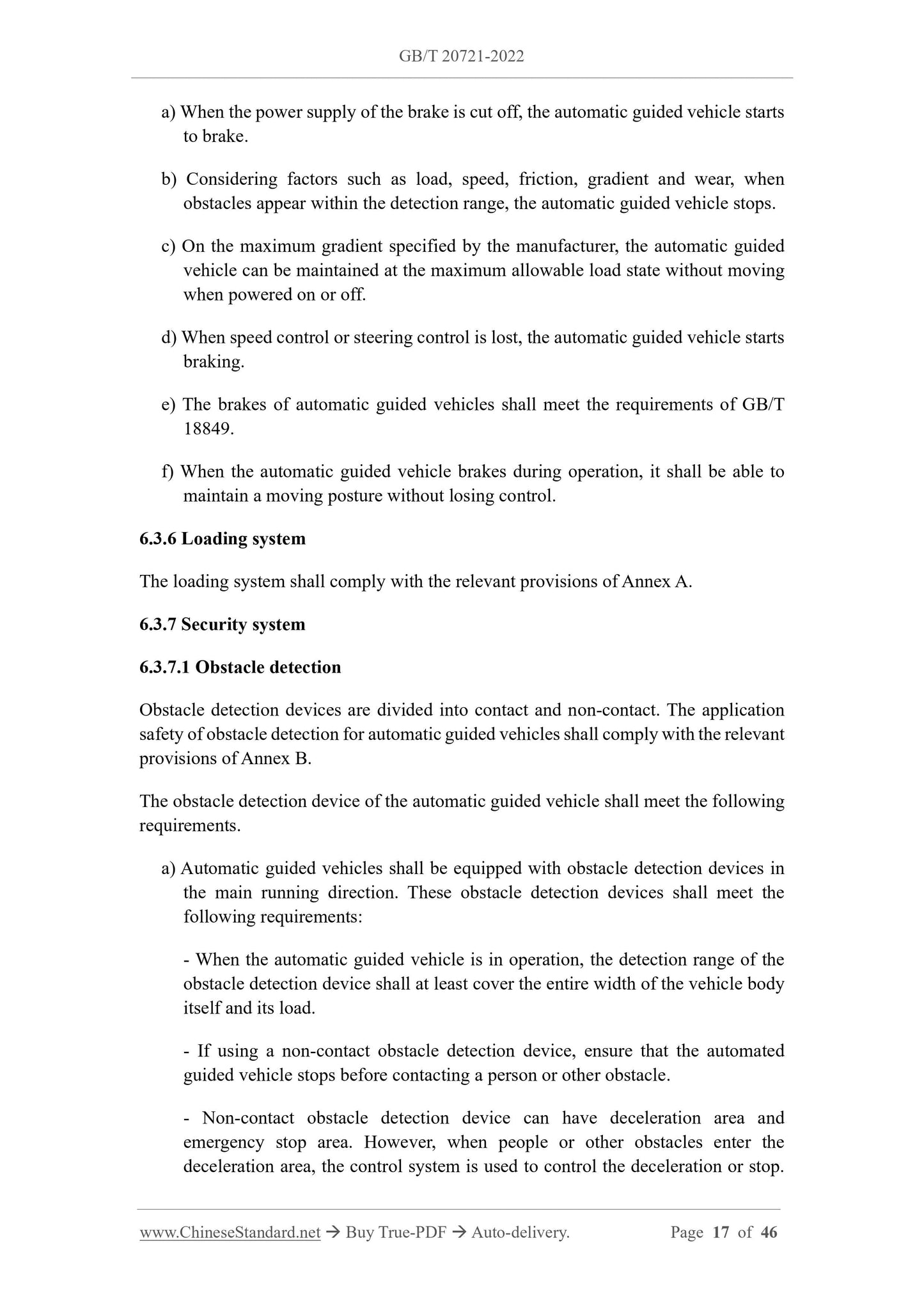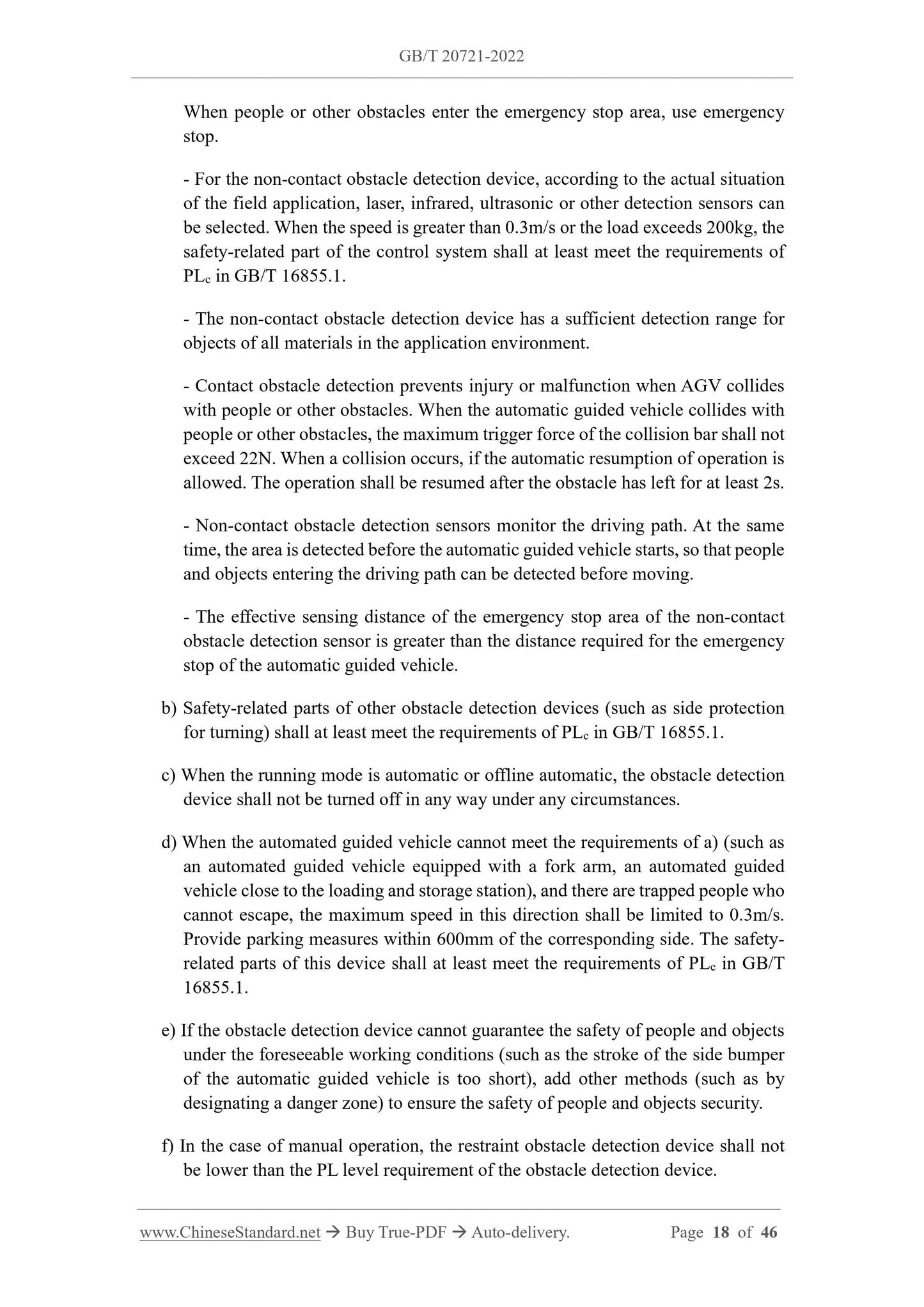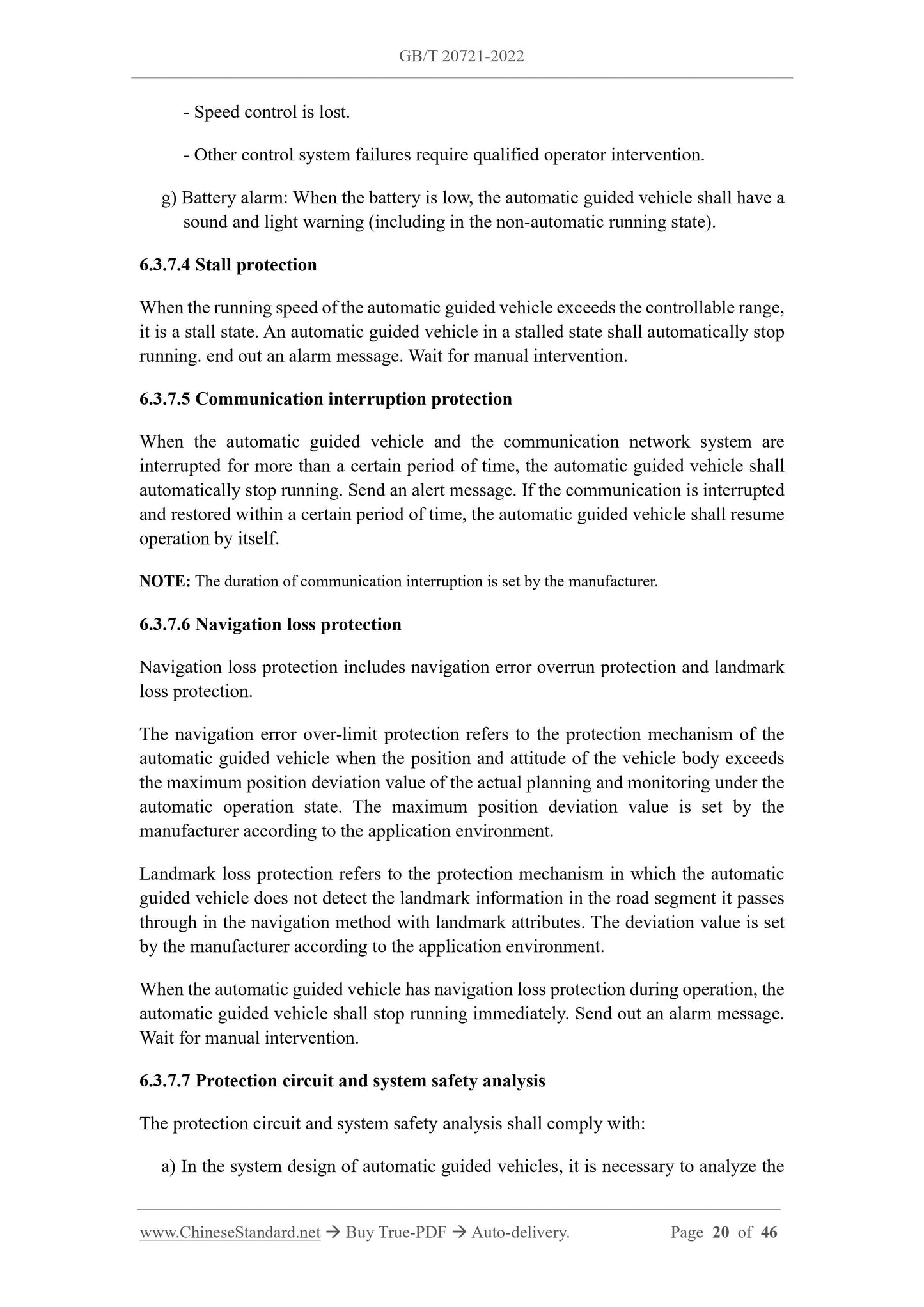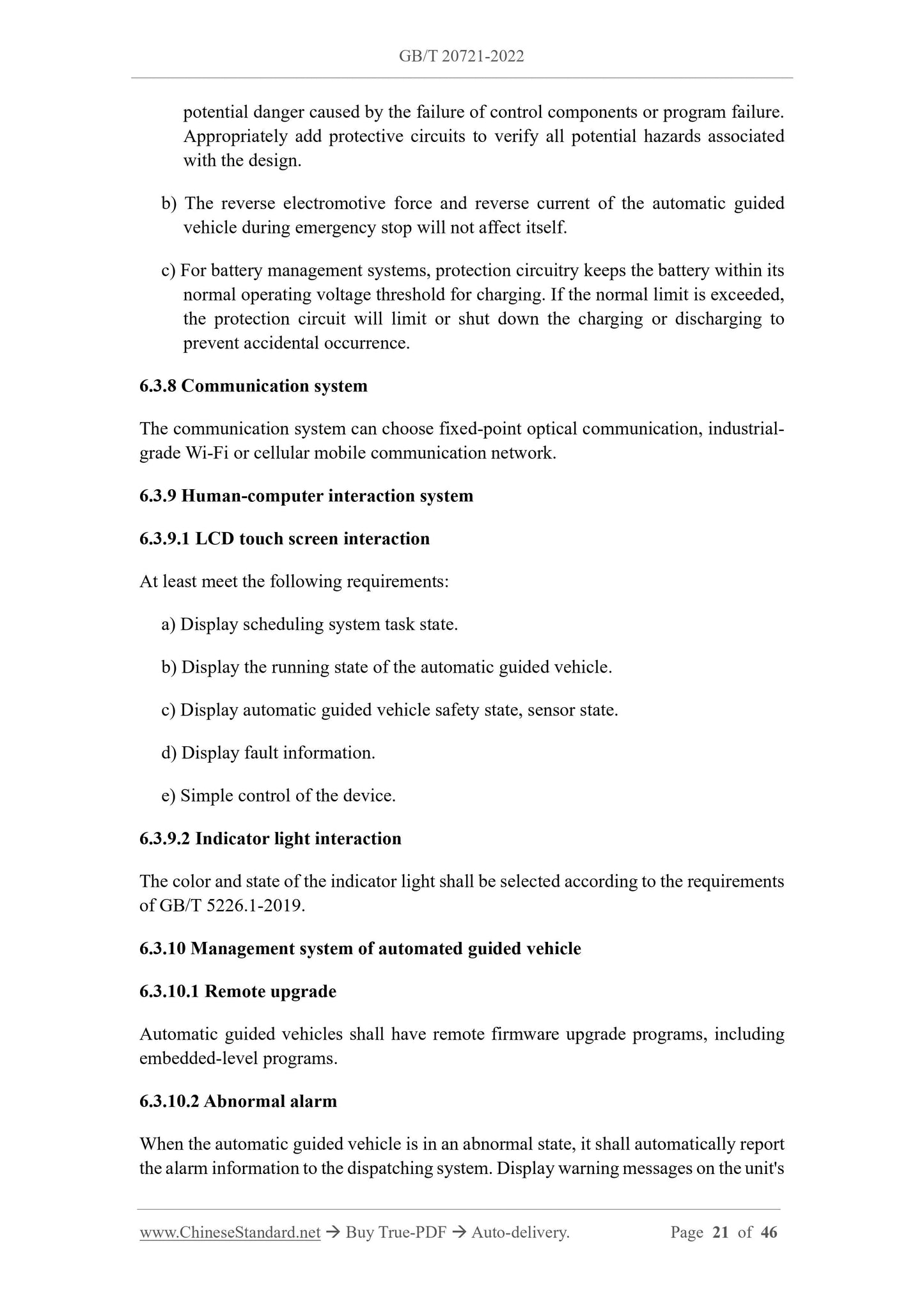1
/
of
12
www.ChineseStandard.us -- Field Test Asia Pte. Ltd.
GB/T 20721-2022 English PDF (GB/T20721-2022)
GB/T 20721-2022 English PDF (GB/T20721-2022)
Regular price
$470.00
Regular price
Sale price
$470.00
Unit price
/
per
Shipping calculated at checkout.
Couldn't load pickup availability
GB/T 20721-2022: Automatic guided vehicles - General specifications
Delivery: 9 seconds. Download (and Email) true-PDF + Invoice.Get Quotation: Click GB/T 20721-2022 (Self-service in 1-minute)
Newer / historical versions: GB/T 20721-2022
Preview True-PDF
Scope
This Standard specifies product classification, technical requirements, test methods,inspection rules and marking, packaging, transportation, storage for automatic guided
vehicles.
This Standard is applicable to the design, manufacture and inspection of automated
guided vehicles in the fields of warehousing, production lines, transportation, and
manufacturing.
Basic Data
| Standard ID | GB/T 20721-2022 (GB/T20721-2022) |
| Description (Translated English) | Automatic guided vehicles - General specifications |
| Sector / Industry | National Standard (Recommended) |
| Classification of Chinese Standard | J28 |
| Word Count Estimation | 30,319 |
| Issuing agency(ies) | State Administration for Market Regulation, China National Standardization Administration |
Share
